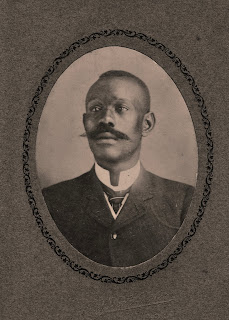Thomas P. Freeman was born about 1811 according to the 1870 United States Census. He was born in Louisiana, He was married to a woman named Isabella. The household members were; Levi, Tom, Indiana, Jane, his wife Isabella, Hammond, and Dicy Freeman.
The 1830's United States Census recorded him as a freeman. There were a total of 5 Free People of Color living in the house. One male between the age of 36-54; One female under the age 10; 2 females between the ages 10-23; 1 female between the age of 24-35.
In the 1880 United States Federal Census. Thomas father's birthplace is recorded as Africa. His mother birthplace was Virginia. It's recorded that Thomas knew how to read and write. He worked as a farmer in the 5th Ward, St. Helena, Parish, Louisiana.
Further, into my research, I found that Thomas served in the Civil War. His wife Isabella filed for her widow pension on August 1, 1890. He served in E. 32. USC. Infantry. The 32nd Regiment United States Colored Regiment was organized by Camp William Penn in Pennsylvania in March 1864. He was a private in Company E. The date he Mustered into Service was February 26, 1864. He mustered out with Company, August 22, 1865.
 |
Isabella Freeman
Widow Pension File |
The son of Thomas and Isabella was also named Thomas. He was born around 1855 in Louisiana. Thomas Freeman, Jr., was married to Alice Stilley. They gave birth to the following children; Monore, Mattie, John H, Allice A, Author, Alfetter, Rosa, Clara,, Viola, and Leroy.
Further, into my research, I found that Thomas served in the Civil War. His wife Isabella filed for her widow pension on August 1, 1890. He served in E. 32. USC. Infantry.
Thomas purchased the what is now called Carter Plantation, a historic plantation house located in Livingston Parish. He purchased the property he called "Sycamore" between 1817 and 1820, from James Rheem. The property was around 2,000 acres. He was the first African American to own property in St. Helena Parish. Throughout the years the ownership changes. The Cypress swamp was a major timber source for the area. The Blood River was used to transport the rich cypress timber south.
The Hammond Vindicator published an article as part of their Bicentennial series on "Bloody Tangipahoa," Freeman was the first man to record a legal transaction in the Greensburg District of Louisiana. Freeman was the first black man to own property in what is now Livingston Parish. Freeman with some means and he owned large tracts of property. In 1838, he sold the land and house to W.L. Breed a local political figure. Breed had been sheriff of St. Helena when Livingston was created
It is noted that there were two schools on the site. One for the slaveholder's children and family. The second school was hidden in the woods for the slave children to secretly be educated.
MAJOR BIBLIOGRAPHICAL REFERENCES
"Bicentennial Notes," Hammond Vindicator, June 26, 1975
1830 United States Census
1870 United States Census
Carter Plantation website, http:www.carterplantation.com/index.htm





